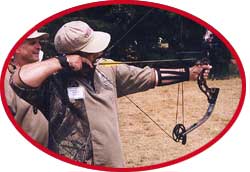Bowsite.com
The Nation's Leading Bowhunting Website
The first National Bowhunting Conference was held Feb. 17-18 in St. Louis. The goal of this conference was to exchange ideas, and data, about key bowhunting issues. These ideas could then be used to help educate wildlife agencies so they could understand different viewpoints and opinions. The committee also wanted to make data available (where it existed) so more informed wildlife management decisions could be made. The organizing committee for this conference was composed of the following:
All the members of the committee were bowhunters. The committee decided that the key issues were:
The planning committee sought funding for this conference and a few of the state bowhunting organizations helped. Some larger organizations (i.e.. SCI and Pope and Young) made larger contributions. But the majority of the funding came from AMO and from the host state, the Missouri Dept. of Conservation. The funding was solicited after the program was set so that there were no conflict of interest or attempts to dictate the program. The first session was on equipment and that one has generated the most interest. In two previous conferences (1983 Midwest Bowhunting Conference and 1993 Western Bowhunting Conference) the opening session was also about equipment. Let's face it, equipment is a hot issue, same as with fishing, golf, little league, all forms of outdoor recreation, etc. As with any conference, not everything presented was agreed upon by every speaker nor will it be agreed upon by everyone in the audience. Our objective was to try to get issues covered without bias or prejudice.
An example of one such issue was the topic of crossbows. The planning committee knew that crossbows are an issue. I am strongly outspoken on NOT allowing crossbows for able-bodies hunters within bow seasons. However, regardless of how I feel, and regardless of how most bowhunters feel, we are increasingly hearing more about crossbows. So, the planning committee decided to invite biologists from Ohio and Arkansas to give us the data they had, as well as their perspectives about crossbows in the general archery season. Jay McAninch (President of AMO) spoke in relation to regulations and the inconsistencies from state to state. For example one regulations states that a bow must be able to cast an arrow 180 yards" ...obviously not written by a bowhunter. Other papers included: "Review of Archery Equipment Regulations for Big Game Hunting in the United States." "A Review of Regulation- setting Processes Among State Wildlife Agencies," "Review of Criteria and Procedure and Recommendations for Tightening Regulation-setting in State Wildlife Agencies," "The Political Realities of Regulation Setting." There were 7 papers on the urban deer situation. The urban problem is huge and the antis are fighting for the use of contraception, instead of bowhunting. This issue will become larger as urban sprawl continues. We also had several wounding papers, including an interesting paper from a military base in Oklahoma using only recurves and longbows. Wounding rates there were low enough to satisfy biologists and were in line with compound wounding rates. Facts are that wounding is not a biological issue for bows of any kind and we now have additional data to support that claim. There was interesting data from South Dakota showing 93% use of compound bows within the State. That paper presented information on when bowhunters shoot, how much they practice, how much they scout, etc. Dr. Craig Miller presented some very interesting data on the lease situation in Illinois. It is a complex problem whereby the increasing number of non resident bowhunters are competing for space (and big bucks) with state bowhunters. All in all 16 papers were given after the first session plus a panel summarizing bow issues in all US states. Our objectives were to try to cover the issues and make data available to the wildlife agencies. I feel the results were positive and we look forward to sharing the data with the public when they are published. There will likely be another conference 3-5 years from now. As within any project, we have learned from this one and will improve on the next one. Look for preceedings and data from the conference within the next few months. A copy will be posted here at Bowsite.com. |





